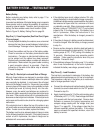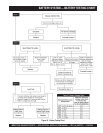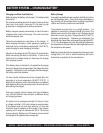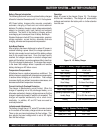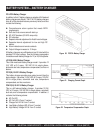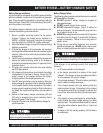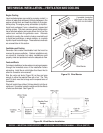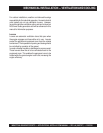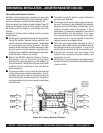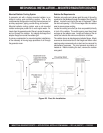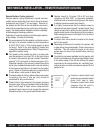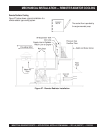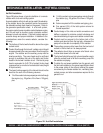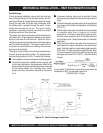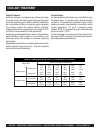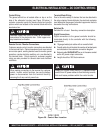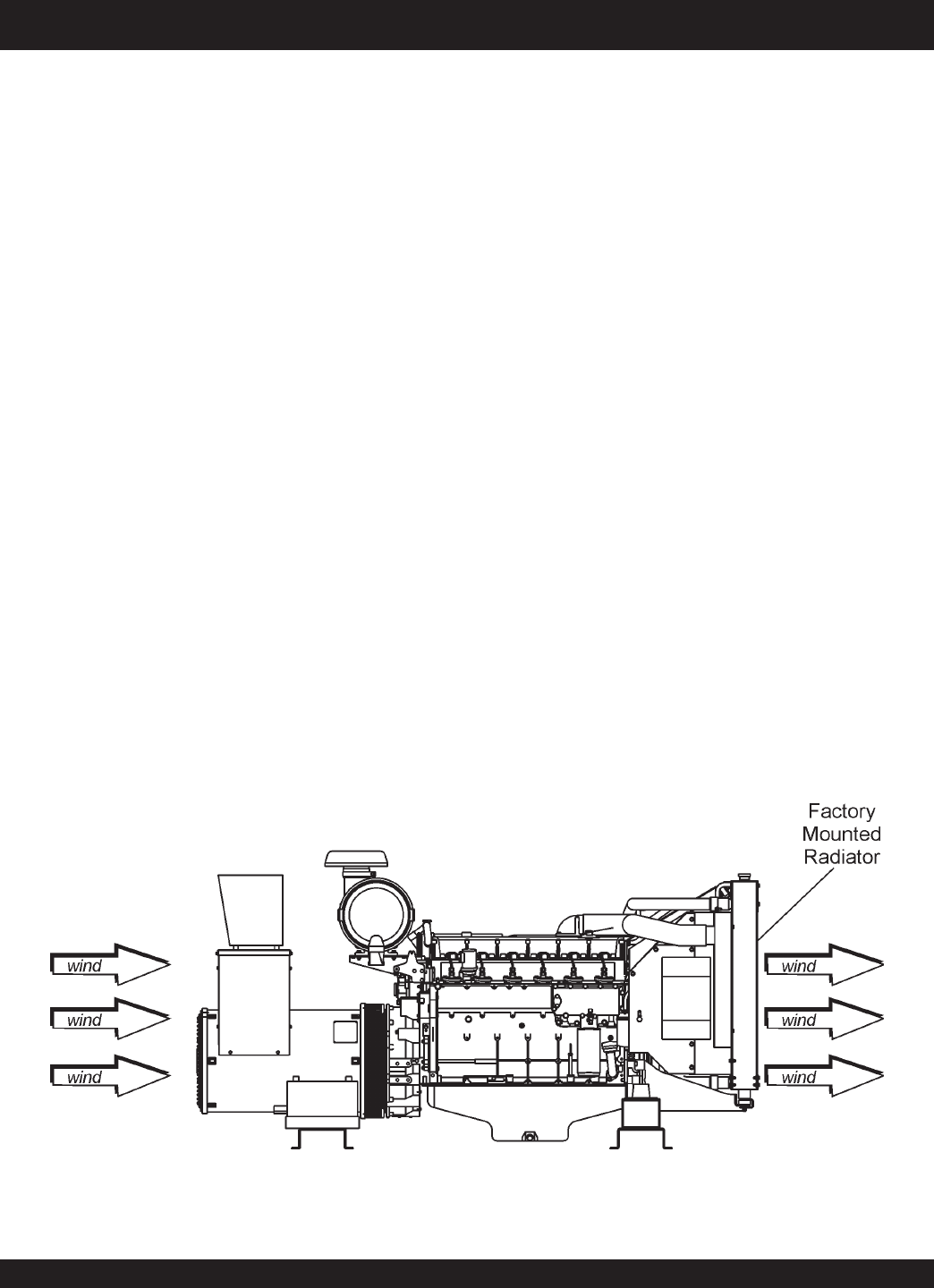
PAGE 62 — INDUSTRIAL GENERATOR SETS — APPLICATION & INSTALLATION MANUAL — REV. #4 (09/07/07)
Factory Mounted Radiator Ventilation
Ventilation of the generator set is necessary to remove the
heat and fumes dissipated by the engine, generator, battery,
and its accessories as well as provide combustion air.
When the genset has a factory mounted radiator (Figure 25
below), the fan draws air over the set and pushes it through
the radiator which has flanges for connecting a duct to the
outdoors.
Consider the following when installing a factory mounted
radiator genset:
See the genset specification sheet for the design airflow
through the radiator, allowable airflow restriction, and
minimum air inlet and outlet opening areas.
The allowable
air flow restriction must not be exceeded
. The static
pressure (air flow restriction) should be measured to make
sure the system is not too restrictive, especially when
ventilating air is supplied and discharged through ducts,
restrictive grilles, screens, and louvers.
Refer to the ASHRAE (American Society of Heating,
Refrigeration and Air Conditioning Engineers)
publications for recommendations on duct design if air
ducts are required. Note that the inlet duct must handle
combustion air flow, ventilating air flow, and must be
sized accordingly.
Louvers and screens over air inlet and outlet openings
restrict air flow and vary widely in performance. A louver
assembly with narrow vanes, for example, tends to be
more restrictive than one with wide vanes. The effective
open area specified by the louver or screen manufacturer
should be used.
MECHANICAL INSTALLATION — MOUNTED RADIATOR COOLING
Figure 25. Factory Mounted Radiator
The airflow through the radiator is usually sufficient for
generator room ventilation.
The radiator fan will cause a slight negative pressure in
the room. Therefore it is recommended that combustion
equipment such as the building heating boilers not be
located in the same room as the genset. If this is
unavoidable, it is necessary to determine if there will be
detrimental effects, such as backdraft. If so, means
such as extra large room inlet openings and/or ducts,
pressurized fans, etc. may be required to reduce the
negative pressure to acceptable levels.
Other than recirculating radiator discharge air into the
generator room in colder climates, all ventilating air must
be discharged directly to the outdoors. It must not be
used to heat any space other than the generator room.
A flexible duct connecter must be provided at the
radiator to take up genset movement, vibration, and
transmission of noise.
Ventilating air inlet and discharge openings should be
located or shielded to minimize fan noise and the effects
of wind on airflow.



